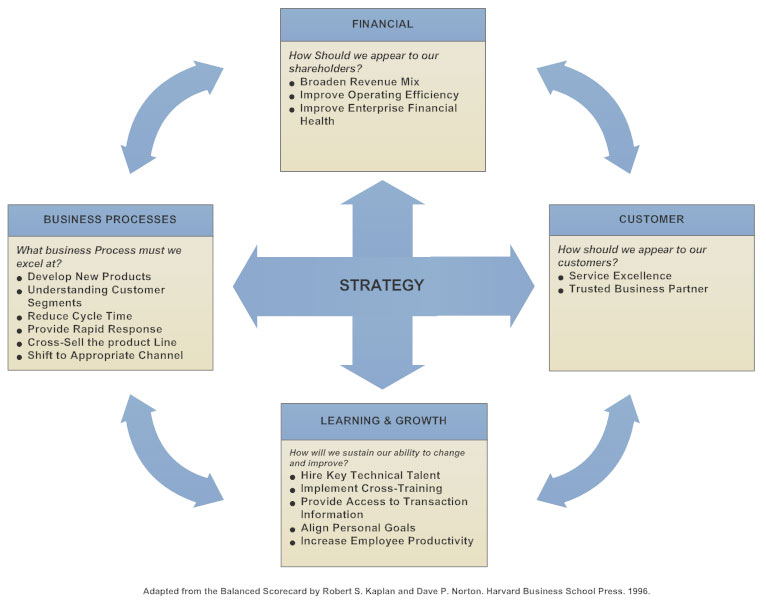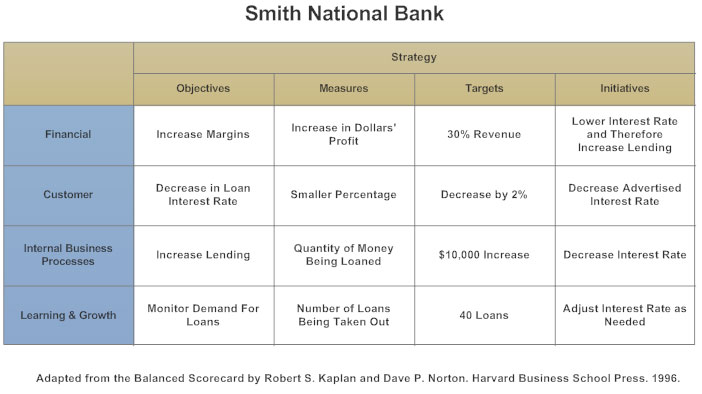Lets get started with our 2nd Blog on Management.
BALANCED SCORECARD
ORIGIN OF BALANCE SCORE CARD
In 1992, Drs. David P. Norton and Robert S. Kaplan started a working group to examine the challenge of reporting only on financial measures. In for-profit organizations, financial measures provided a lagging report (i.e. they told you what happened last month, quarter, or year), but they were not able to look forward. Norton and Kaplan wanted to specifically look at what measures that look forward in time and act as leading indicators might look like and how that could affect an organization’s strategy.
What is Balanced Score Card?
The Balanced Scorecard (BSC) is a business framework used for tracking and managing an organization’s strategy.
The term balanced scorecard (BSC) refers to a Strategic Management performance metrics used to identify and improve various internal business functions and their resulting external outcomes. Used to measure and provide feedback to organizations, balanced scorecards are common among companies in the United States, the United Kingdom, Japan, and Europe. Data collection is crucial to providing quantitative results as managers and executives gather and interpret the information. Company personnel can use this information to make better decisions for the future of their organizations.
The BSC framework is based on the balance between leading and lagging indicator, which can respectively be thought of as the drivers and outcomes of your company goals. When used in the Balanced Scorecard framework, these key indicator tell you whether or not you’re accomplishing your goals and whether you’re on the right track to accomplish future goals.
With a Balanced Scorecard, you have the capability to:
- Describe your strategy.
- Measure your strategy.
- Track the actions you’re taking to improve upon your results.
Characteristics of the Balanced Scorecard Model (BSC)
Information is collected and analyzed from four aspects of a business:
1. Learning and growth are analyzed through the investigation of training and knowledge resources. This first leg handles how well information is captured and how effectively employees use that information to convert it to a competitive advantage within the industry.
- 2. Business processes are evaluated by investigating how well products are manufactured. Operational management is analyzed to track any gaps, delays, bottlenecks, shortages, or waste.
- 3. Customer perspectives are collected to gauge customer satisfaction with the quality, price, and availability of products or services. Customers provide feedback about their satisfaction with current products.
- 4. Financial data, such as sales, expenditures, and income are used to understand financial performance. These financial metrics may include dollar amounts, financial ratios, budget variances, or income targets.
Four Perspectives of the Balanced Scorecard
The following are the key areas that a balanced scorecard focuses on:
1. Financial perspective
Under the financial perspective, the goal of a company is to ensure that it earns a return on the investments made and manages key risks involved in running the business. The goals can be achieved by satisfying the needs of all players involved with the business, such as the shareholders, customers, and suppliers.
The shareholders are an integral part of the business since they are the providers of capital; they should be happy when the company achieves financial success. They want to be sure that the company is continually generating revenues and that the organization meets goals such as improving profitability and developing new revenue sources. Steps taken to achieve such goals may include introducing new products and services, improving the company’s value proposition, and cutting down on the costs of doing business.
2. Customer perspective
The customer perspective monitors how the entity is providing value to its customers and determines the level of customer satisfaction with the company’s products and services. Customer satisfaction is an indicator of the company’s success. How well a company treats its customers can obviously affect its profitability.
The balanced scorecard considers the company’s reputation versus its competitors. How do customers see your company vis-à-vis your competitors? It enables the organization to step out of its comfort zone to view itself from the customer’s point of view rather than just from an internal perspective.
Some of the strategies that a company can focus on to improve its reputation among customers include improving product quality, enhancing the customer shopping experience, and adjusting the prices of its main products and services.
3. Internal business processes perspective
A business’ internal processes determine how well the entity runs. A balanced scorecard puts into perspective the measures and objectives that can help the business run more effectively. Also, the scorecard helps evaluate the company’s products or services and determine whether they conform to the standards that customers desire. A key part of this perspective is aiming to answer the question, “What are we good at?”
The answer to that question can help the company formulate marketing strategies and pursue innovations that lead to the creation of new and improved ways of meeting the needs of customers.
4. Organizational capacity perspective or learning & Growth
Organizational capacity is important in optimizing goals and objectives with favorable results. The personnel in the organization’s departments are required to demonstrate high performance in terms of leadership, the entity’s culture, application of knowledge, and skill sets.
Proper infrastructure is required for the organization to deliver according to the expectations of management. For example, the organization should use the latest technology to automate activities and ensure a smooth flow of activities. This area examines the company's health in terms of training employees on rapidly changing technologies, mentoring junior employees in a way that helps them grow and contribute, and employing the latest tools and systems to foster innovation. You may also want to examine how fast your company responds to change and how long it takes a team to develop a new product and bring it to market.
Examples for balance score card:




Comments
Post a Comment